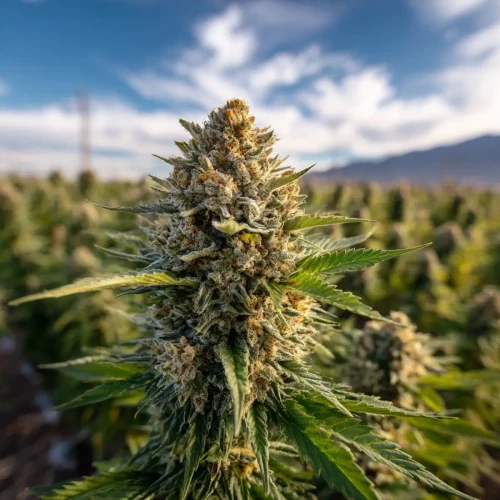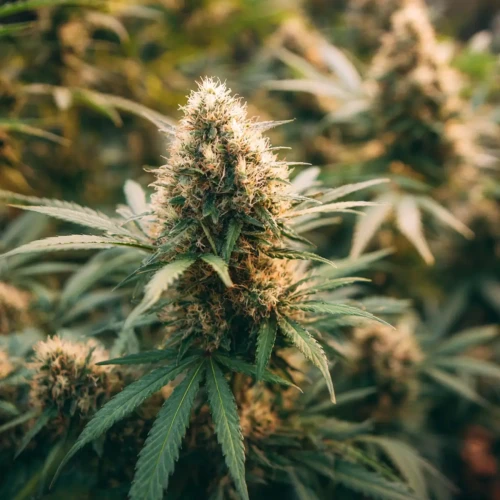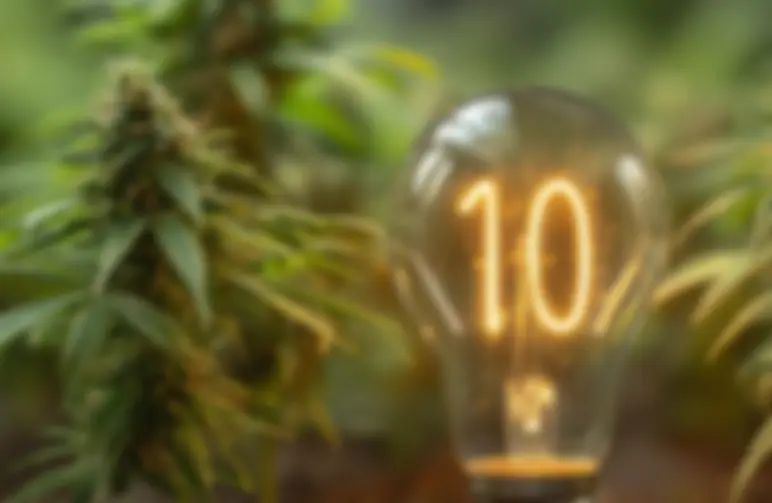It's not as easy as throwing seeds into the ground and hoping for the best when you grow cannabis. I've learned the hard way over many years of gardening that growing cannabis is a difficult but very rewarding hobby that requires care, knowledge, and patience. These seven tried-and-true tips will help you get the most out of every harvest, no matter how experienced you are or how new you are to growing.
10 Tips for max Cannabis Yields
1. Start with the best genes
You wouldn't expect prize-winning tomatoes to come from random, untested seeds. The same is true for growing cannabis: it depends on good genetics. Seeds that are bred to have high yields, high potency, and resistance to pests always do better than regular seeds. I once planted some mystery seeds to save money. What did I get? Plants that were thin and had few, unimpressive buds. Always buy genetics that have been shown to work, and you'll set yourself up for big harvests.
2. Make the most of your lighting
Cannabis loves a lot of good light. Photoperiod strains need a strict schedule: 18 hours of light during the vegetative stage and 12 hours of light during the flowering stage. Autoflowers may not need as much light, but they still do better with bright, steady light. Plants need a lot of energy to grow, and high-quality LED or HPS lights give them that energy. My yields went through the roof after I bought better lighting, which proves that good lighting really does help plants grow.
3. Be smart about balancing pH and nutrients
It's not the same for all cannabis plants when it comes to feeding them. During the vegetative stage, they need fertilizers with a lot of nitrogen, and during flowering, they need nutrients with a lot of phosphorus and potassium. But keep in mind that nutrients only work if the pH levels in your growing medium are just right. If you're growing in soil, try to keep the pH between 6.0 and 6.5. If you're growing in water, try to keep it a little lower. I learned from experience that an unbalanced pH can make it hard for plants to take in nutrients, which slows their growth and limits their yields.
4. Learn how to prune well
Pruning may seem scary, but it's necessary to get the most out of your plants. Topping is one method that involves cutting the main stem to promote lateral growth. Low-stress training (LST) is another method that involves gently bending branches to let sunlight reach lower bud sites. Proper pruning doesn't just get rid of unwanted growth; it also directs the plant's energy into making bigger, better buds. When I topped a plant for the first time, I was scared I had hurt it, but then it grew like crazy.
5. Keep the weather just right
Controlling the climate is very important for growing cannabis. Cannabis plants do best in temperatures between 21 °C and 28 °C. During the vegetative stage, keep the humidity around 60%. When the plants start to flower, lower the humidity to around 40% to keep mold from growing. If it's too humid, mold could grow. Plants get stressed when it's too dry, which slows their growth. Investing in fans, thermometers, and dehumidifiers has greatly increased my yields and made my plants' environment more comfortable and productive.


6. Pick the Right Soil and Containers
The container and soil you choose make a big difference. Raised beds and fabric pots let air and water flow freely, which is important for healthy roots. I swear by soils that are organic, full of nutrients, and have compost and worm castings added to them. Plants grown in dense, poorly-draining soil did much worse than those grown in my well-prepared raised beds. It was like comparing night and day.
7. Pick at the Right Time
When it comes to harvesting cannabis, timing is everything. It's important to keep an eye on the trichomes, which are tiny resinous glands. At first, they are clear, but when they are ripe, they turn milky white with hints of amber. At this point, harvesting guarantees the highest levels of cannabinoids and terpenes. Once, I was too eager and harvested too soon, which made me unhappy with how strong it was. Being patient at harvest time really pays off with better yields and stronger effects.
8. A Gardener's Secret Weapon: Raised Beds
Speaking of raised beds, they can be used for more than just vegetables. Cannabis plants love the nutrient-rich, well-aerated space that raised beds give them. Scott Wilson, a Master Gardener, swears by raised bed gardening because it gives him more control over the soil, which directly affects the health and productivity of his plants. His beds always produce a lot of food, including squash, potatoes, and yes, cannabis. Raised beds make it easier to weed, water, and harvest, and they also make sure that the soil is in the best condition for the best yield and plant health.
9. Timing is Everything in Phenology
Learning about phenology, or the seasonal patterns that affect plant growth, can help you grow cannabis a lot. Temperature changes and the length of the day are examples of phenological cues that tell you when to plant and when to harvest. Watching these natural rhythms can help you plant at the right time, which lowers the risk of frost damage or heat stress. Theresa Crimmins, an ecologist, says that paying attention to phenological indicators can greatly improve yields and plant health.
10. Use the Power of Observation
One last piece of advice that people often forget is to spend time with your plants. You can find problems early on by regularly and carefully watching your plants. These problems could be a lack of nutrients, an infestation of pests, or signs of stress. Robin Greenfield, who is famous for living off the land, stresses how important it is to closely observe and deeply understand plants. You never waste time in the garden; it's an investment in plants that are healthier and produce more.
Using these tips in your cannabis gardening routine will make it a peaceful mix of science, art, and patience. Each harvest is more than just a bunch of buds; it's proof of careful, hard work in the garden. Enjoy the trip and the results of your work!









